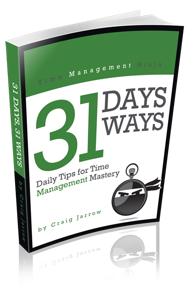
If you’re like me you have a constant stream of emails arriving in your inbox, some of them needing almost immediate attention.
When we first opened shop eight years ago my partner and I had only a small handful of clients to service in our marketing firm. My inbox reflected as much, with daily emails rarely reaching double digits.
As time went by and we started closing more and more pitches, comms increased exponentially. Until one day I opened my laptop and found in excess of 500 emails waiting for me. At that point I realized the time for being reactive had come and gone.
You’ve likely reached that point too. What we need is a solid, proactive plan for keeping our inbox at zero. I tested a few different approaches before finally landing on this one. It’s as effective as it is simple.
Achieving Inbox Zero
Here are 6 simple steps to achieve inbox zero:
- Assess. Whenever an email arrives I open it and immediately assess it. If it can be dealt with in three minutes or less, I’ll deal with it there and then. It helps that I can type fast, but make no mistake, I don’t stand on ceremony with my responses. With internal emails I take succinct to a whole new level. If one or two words will suffice, then that will be the extent of my response.
- Respond. Obviously with clients I maintain a professional air but I still keep to the task at hand. I won’t include pleasantries such as ‘How was your weekend?’ and neither will I refer to anything other than the current topic of discussion. This approach usually leaves no room for a follow-up response, thereby essentially ending the conversation after just one email.
- Forward. If an email cannot be addressed within my three-minute time limit, I’ll forward it to Asana (the teamworking and task management tool we use at TopLine) and add it to my task list to be dealt with later. Asana is great for managing our team’s workflow and projects and helps us to not only keep internal emails to a minimum, but ensures the chain of communication is always on hand in one place should anyone need to reference it.
- File. As soon as I’ve dealt with an email I’ll move it to the relevant folder. I also have a very specific system for creating folders, which helps me keep track of previous correspondence and allows me to find something easily and quickly if I need to. Of course, there’s always the ‘search’ option should an email go missing, but if your filing system is intuitive the chances of that happening are slim. It does happen sometimes though, which is why I’ve instilled in my team the habit of writing self-explanatory subject lines.
- Mobile. Nothing changes when I’m out and about either. I’ll respond or forward and file, whichever is best, directly from my phone. A lot of people don’t like the idea of getting email on their phone; they believe it prevents them from switching off from work. If you don’t manage your emails on-the-go properly it can quite easily escalate into a problem. I like being able to access my inbox from my mobile. I know then that by the time I get back to my desk after a meeting, I won’t have a bulging in-box waiting for me.
- Unsubscribe. I am also religious about unsubscribing from mass mailers. I sometimes end up on these lists because my email address has been sold by a third party. It’s usually not hard to find out who they are, so I then contact the third party in question and ask to be removed from their list. This is one of those things that seems like a lot of effort in the moment, but definitely pays off in the long run. Finally, I never, ever subscribe to company newsletters. Yes, there’s a small chance that I’m missing out because companies don’t always share the same content from their newsletters on their blogs, but it’s a chance I’m more than happy to take.
Spend Less Time On Email
Life is busy. We need to work that much harder to manage our time and ensure we spend it where it counts most. One way to do this is by keeping the smaller tasks from becoming unmanageable.
On any given day I can always see the last email in my in-box without having to scroll down. It might seem like a small thing, but maintaining an uncluttered in-box will leave you with the space and freedom to focus on the tasks that really matter.
Question: How many emails are in your inbox? How would implementing this system allow to your to better spend your time on other things? You can leave a comment by clicking here. I am the author of Time Management Ninja and help individuals and companies reclaim their time to be more productive. As well, I am the author of the book
I am the author of Time Management Ninja and help individuals and companies reclaim their time to be more productive. As well, I am the author of the book 
